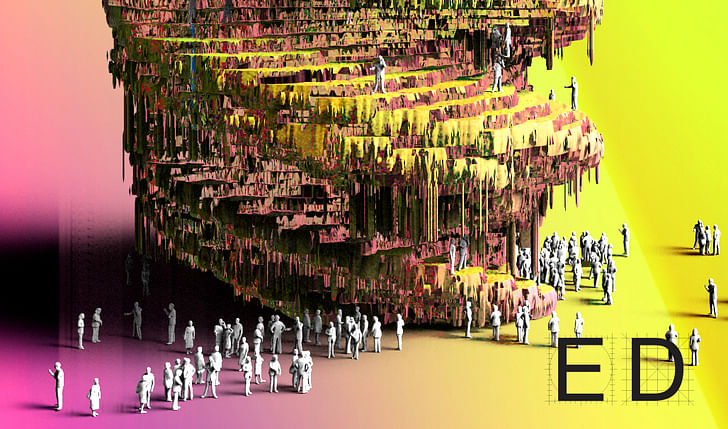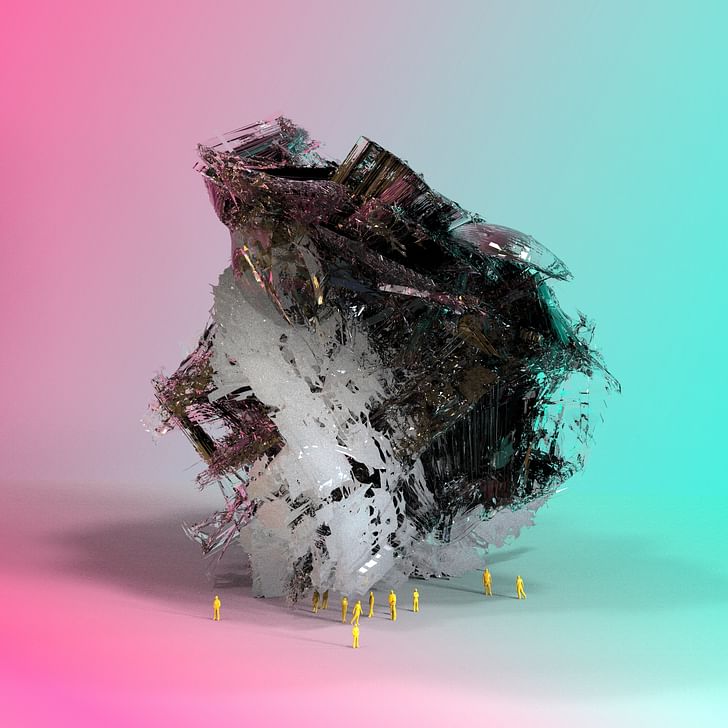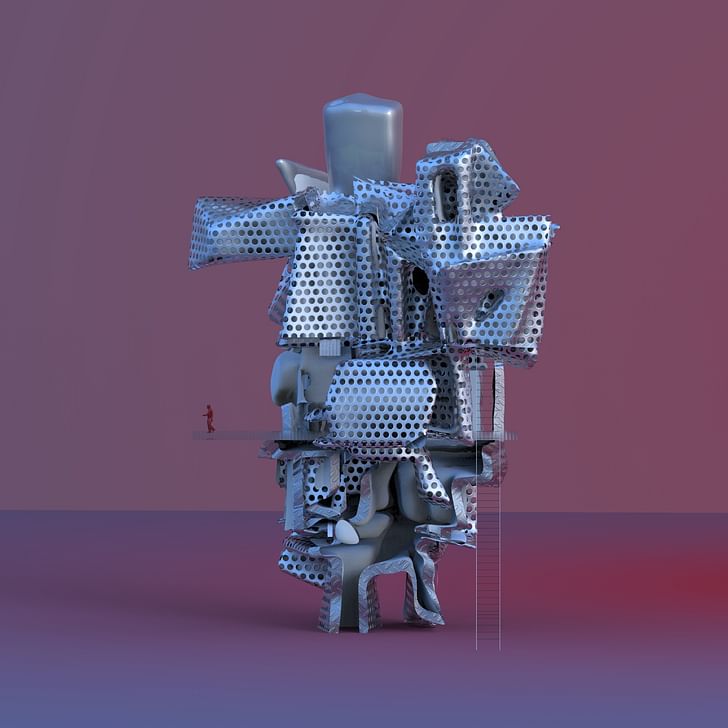

Like many of their contemporaries, the Vienna-based studio iheartblob have taken an interest in emerging schools of philosophy, notably object-oriented ontology and thermodynamic theory. But, unlike many peers, they do so with a critical remove. In this excerpt from their project for Ed, iheartblob designs a series of alluring “objects” meant to enchant, but also reflect on the “crises of thought” they find dominate architecture today. The collective plays with new and popular ideas in architecture as if they were materials, engaging seriously with each while remaining at a distance from full immersion. Their designs are rarely seen in plan and section but rather expressed using renders, mixed realities (physical and augmented), and animations in order to reflect their Lagrangian derivations.
Narrative
How do we fully engage with a project?
How can we move beyond traditional means of representing a project? We believe through articulated narrative one can expose all aspects of a diversely experimental and progressive project, expressing those mostly unexplored nooks and crannies found in the mundane architectural drawings of plans and section. The narrative has become a key point of orientation in exploring and navigating the deep realm of foggy architectural concepts. It can ultimately elevate a project beyond the physical into that of a thought process.
Loop
Can we really design with a sporadic, almost irrational feedback loop?
Learning from machine vision has become a staple; it stands as a core element in our robotic future. Feeding physical information through machinic eyes back to the physical and then, once again, towards the digital has become an experimental practice wherein we design with machines in mind as we explore undiscovered parameters of our reality. Our excitement comes from the glitches, errors, flaws, and obscurities developed through this transitional process.
Post-Physical
Can we truly embrace the flat?
Descartes states, “All objects that have ever entered my mind when awake, had no more truth than the illusions of my dreams.” We put so much emphasis on what we can touch that a stigma toward the digital object has developed feverishly. However, of course, the digital object is as real as the device you view it on. We fully believe in the flattening of hierarchy and the freeing of objects from their physical shackles.

Homesick
In a world so fleeting how do we regain the feeling of home?
People tend to have emotional attachments to place, especially their childhood homes. Color, pattern, and image surely aren’t enough. We must embellish the idea of home wherein now home may travel with us. Location will no longer be our burden, a sense of loss won’t be felt—instead we shall transport the idea of home with us. We are dealing with multiple open-ended situations both socially and architecturally where we must embrace emotive responses to architecture, not as a relic but as a core element within.

Wrapping
How do we design the interior void space against the exterior solid?
As architecture becomes increasingly fluid (through the use of non-physical realities and digital tools), our forms must espouse a connection that both expands past building envelopes and integrates ideas of context and community into our architecture.
To see the rest of the series, order your copy of Ed #1 "The Architecture of Architecture" here.
1 Comment
cool. youll prob really like this old work from 2012: http://www.revistaplot.com/en/...
Block this user
Are you sure you want to block this user and hide all related comments throughout the site?
Archinect
This is your first comment on Archinect. Your comment will be visible once approved.